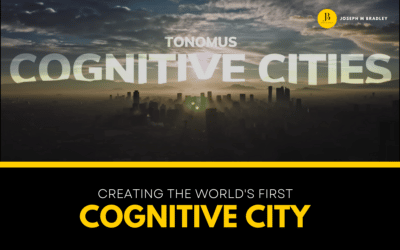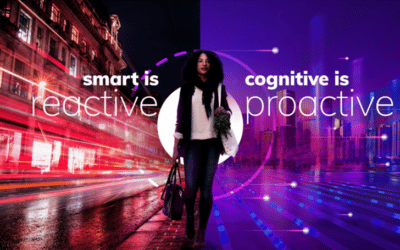One of the exciting things about living in these times is the lighting-fast pace of change. Digital disruption can make some people uneasy, but for me, the overwhelming sense of possibilities and opportunities transcends all else.
Every year those opportunities — and the innovations that make them possible — can be astonishing. And if there’s one thing I can predict with authority about 2017, it willsurprise us. Some technology, app, use case, business model, innovation, or business transition will show up out of the blue and turn an industry — or two, or three – on its head.
So yes, there will be surprises, for sure. But in the meantime, it’s still fun to prognosticate. So, without further ado, here are the first five tech trends that I believe will change the way we work in 2017.
Smart Machines Go Mainstream
We’ve all seen the synchronized, balletic robot arms that have revolutionized manufacturing plants in recent decades. Those machines are programmed for repetitive and sometimes dangerous tasks. In 2017, however, sophisticated machine learning and artificial intelligence will drive a highly disruptive transformation — this time in the enterprise. Far from repetitive, the new machines will be cognitive — that is smart enough to verbally interact with humans as they process, learn, and adapt to what is being said or requested. They will even access the emotional state of the people with whom they are interacting, and think ahead to possible outcomes. I believe such technologies will profoundly impact the culture, decision-making processes, and productivity of the enterprise. For now, technologies like IPsoft’s Amelia will change call centers and service desk support. But AI will steadily transform nearly all aspects of the enterprise. This will not be without some changes to job roles and skill sets. However, I believe AI will ultimately enhance human creativity, taking away some the rote work that keeps us from accomplishing larger tasks. AI will arm us with a deeper level of insight and predictive analysis for every decision and task at hand.
Virtual Desktops, in Your Pocket
Virtual desktops have upended our fundamental assumptions about work. No longer confined to the office, our laptops create workspaces in the home or a local café. But what if something comes up during your kid’s soccer game? In 2017, look for virtual workspaces to be available on any mobile device. Technology such as VMware Workspace Suite allows end-users to access a virtual workspace from their mobile operating system. The key word is seamless. Organizations can use a single technology to provide local and remote users with a consistent experience on their phones or tablets.
The New Business Endpoint: You or Bring Your Endpoint
The trend toward greater business mobility won’t stop with phones and tablets. Wearables are already surging in the consumer market. And just as they did with other smart devices, workers will demand to have their favorite wearables integrated into their work lives. Smart, competitive companies will continue to support a workforce that is hypermobile, flexible, and agile. Wearables will become a competitive differentiator and source for talent retention, especially as their level of sophistication and functionality continues to increase. Already, wearables are being used for scheduling, communication, security access, payment, and timecards. Expect many more applications in the coming year.
Analytics for Every Aspect of the Enterprise
Reams of data are useless if they are not combed for real-time, relevant insights. Insight, in turn, is useless if it is not accessible — and not just for data scientists and the c-suite. In 2017, data will be democratized. Whether in a manufacturing plant, retail space, or remote drilling platform, highly relevant data insights will be available to all. And workers won’t need to struggle to find or use them. Intuitive interfaces, augmented reality, and wearables that allow hands-free access to insights will combine for a seamless integration into the workflow. Artificial intelligence and predictive analytics will become another member of the team, in some cases joining the conversation verbally. Not to replace workers, but to enhance their creativity and empower their decisions, at every level of the organization.
Digital Enterprise 2.0
Today, any enterprise that isn’t digital has probably been disrupted already. So digital transformation is no longer about simply converting existing processes from analog to digital. The next phase of the digital enterprise will focus on creating new ways to deliver products and services. This requires a technology foundation that is agile, secure, and scalable — and an analytics platform that will make insight the true currency of the organization. There are revolutionary innovations coming in 2017, but only if businesses are truly digital, to support and empower the workforce — and customers — of the future.
In this context, the digital enterprise is not about converting existing processes from analog to digital. It has to do with new ways to operate the business and how products and services are delivered. Transforming to a digital business is the enabler for all the technologies that will empower the workforce of the future.





